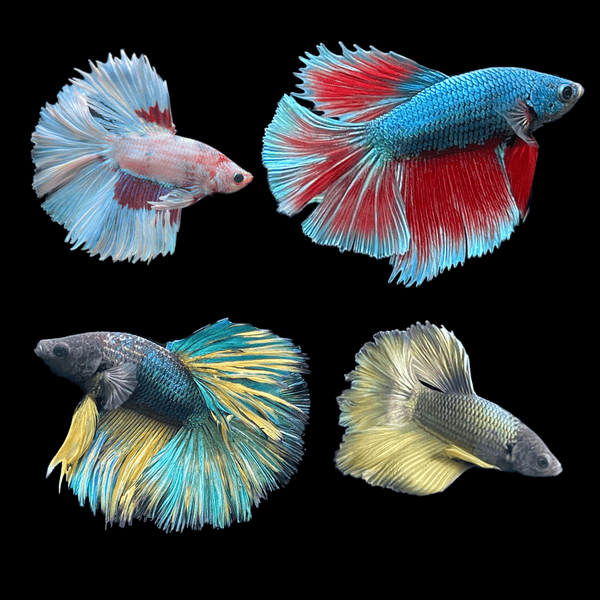Exactly How to Breed Betta Fish Successfully: Expert Techniques and Insights for Hobbyists Looking to Expand Their Betta Collection
Reproducing Betta fish needs a nuanced understanding of genes and environmental problems, making it crucial for hobbyists to approach the process with both persistance and care. Creating an optimal breeding environment, selecting the appropriate sets, and observing the ins and outs of their courtship behaviors are fundamental actions that can substantially affect the result. The succeeding treatment of the fry is vital for guaranteeing their healthy development. As we explore these vital parts, it comes to be clear that effective reproduction is not just regarding the preliminary pairing yet encompasses a wider method that qualities cautious factor to consider.
Understanding Betta Fish Genetics
Recognizing the genes of Betta fish is essential for successful breeding, as it influences characteristics such as color, fin form, and behavior. Betta fish display a varied selection of colors and patterns, largely identified by their hereditary make-up. The main genetics accountable for pigmentation consist of the "B" gene for blue, "D" genetics for red, and the "C" genetics for shade strength. Breeders can control these qualities by selecting certain parent fish that exhibit desired features.
Along with pigmentation, fin morphology is another significant facet of Betta genes (betta fish). The sizes and shape of fins are affected by various genetics, including those that figure out whether the fins are brief, long, or veil-shaped. Understanding these genetic variants assists breeders forecast the phenotypic outcomes of their children
Additionally, behavioral traits such as aggressiveness and territoriality can likewise be influenced by genes. These habits play an important function in the breeding process, as they can impact generating success and the total character of the resulting fry. By adequately recognizing these hereditary concepts, breeders can make informed decisions, eventually improving their reproduction programs and accomplishing preferable results.
Preparing the Reproduction Environment
Developing an optimal reproduction environment is crucial for the successful reproduction of Betta fish. The initial step in preparing this setting is to select a proper breeding tank, ideally ranging from 5 to 10 gallons. This dimension permits enough swimming room and the facility of areas. The storage tank needs to be furnished with a heating unit to keep a stable temperature level between 78 ° F and 80 ° F, which is critical for motivating generating behavior.
Following, take into consideration using a sponge filter or an air stone to give mild water blood circulation without producing solid currents that can stress the fish. It is necessary to set up plants or reproducing cones to supply concealing places and advertise convenience for the female during the spawning process. Floating plants, such as Java moss or water sprite, can also create a more natural atmosphere while helping with bubble nest structure by the man.
Prior to introducing the breeding sets, make sure the water is conditioned and devoid of harmful chemicals, such as chlorine or hefty metals. betta fish. Regular water changes ought to be carried out to keep ideal water high quality, improving the possibilities of successful breeding. With these preparations in place, the breeding environment will certainly sustain the health and well-being of both Betta fish
Selecting Reproduction Pairs
Choosing the ideal breeding pairs is critical for attaining successful Betta fish recreation. Healthy and balanced Betta fish display dynamic shades, clear eyes, and active actions.
Personality is another vital factor to consider, as Betta fish are known for their hostile nature. It is recommended to pick a male and lady that exhibit suitable temperaments to lessen tension during the reproducing process. A tranquil male can encourage a smoother courtship, while a female that is also hostile may disrupt the procedure.
Genetic history also plays a considerable duty in the top quality of the children. Breeding fish that are genetically varied can decrease the risk of hereditary wellness concerns and improve the total vitality of the fry. It is useful to research the lineage of both the male and woman, concentrating on desirable attributes such as fin type, shade patterns, and dimension.
The Breeding Process
The reproduction procedure of Betta fish calls for careful preparation and interest to information to make sure a successful outcome. It is crucial to prepare a suitable reproduction storage tank, preferably a 5-10 gallon fish tank with a temperature maintained at 78-80 ° F. The tank needs to be outfitted with a heating unit, filter (preferably sponge kind to prevent solid currents), and a lot of water plants for the female to conceal.
As soon as the setting is established, introduce the picked breeding pair to the tank, enabling them to acclimate. Observe their habits; the male will display elaborate courtship rituals, including flaring his fins and building a bubble nest. If the lady shows passion, she will certainly show vertical stripes showing preparedness for spawning.
When the female is responsive, the set will engage in visit our website a breeding embrace, throughout which the male feeds the eggs. Keeping optimal water conditions throughout this period is important for the growth of healthy and balanced Betta fry.
Caring for Betta Fry

Feeding Betta fry is essential, as they call for a diet regimen high in healthy protein. They can be fed infusoria or liquid fry food, transitioning to carefully crushed high-grade pellets as they expand. Feed little portions multiple times a day to encourage healthy and balanced development without overloading the tank with leftover food.

As they mature, check their growth very closely and separate any kind of aggressive people to stop harm. By supplying a nurturing atmosphere and proper nourishment, enthusiasts can efficiently elevate Betta fry into dynamic, healthy fish, inevitably boosting like it their breeding ventures.
Verdict
Effective Betta fish breeding requires precise attention to hereditary option, ecological problems, and treatment for the fry. By understanding the genetics of Betta fish and preparing an appropriate breeding environment, enthusiasts can improve the opportunities of generating lively, healthy and balanced children.